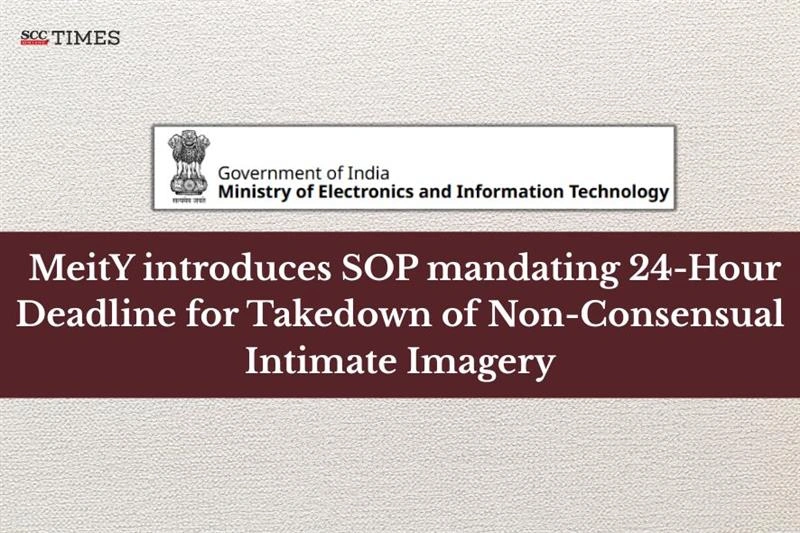On 11-11-2025, the Ministry of Electronics and Information Technology (‘MeitY’) issued a Standard Operating Procedure (‘SOP’)1 to curb the spread of Non-Consensual Intimate Imagery (‘NCII’) across online platforms. The aims to establish clear, victim-centric procedures for the swift removal of such objectionable content and to protect digital dignity and privacy.
Background:
This SOP was developed in compliance with the directions of the Madras High Court in X v. Union of India, 2025 SCC OnLine Mad 3310 (WP Civil No.25017/2025, Order dated 15-7-2025).
In the above-cited case, a woman advocate’s private, non-consensual intimate images and videos, captured without her consent, were uploaded, shared, re-uploaded, and distributed across various digital platforms.
The Court directed the respondent to take urgent action within 48 hours to detect, remove, and block all online content depicting the advocate’s NCII. This included issuing takedown notices and directions to intermediaries, websites, pornographic platforms, and telecom providers.2
The Court instructed the Ministry to “provide a prototype as to what a victim girl must do when faced with situations of dissemination of NCII content”.
Purpose:
The SOP marks a significant step in empowering individuals, especially women, to reclaim control over their digital identities and ensure a safer online environment. It reinforces the government’s commitment to upholding privacy, dignity, and safety in cyberspace.
The SOP provides a structured process for individuals, or their duly authorized representatives, to request the removal or disabling of access to any content hosted on intermediary platforms that violates their privacy. This includes guidance for approaching intermediaries, government agencies, or law enforcement, in accordance with:
-
The Information Technology Act, 2000, including the Information Technology (Intermediary Guidelines and Digital Media Ethics Code) Rules, 2021
-
The Indecent Representation of Women (Prohibition) Act, 1986
It is specifically designed to:
-
Offer clear procedures for victims, intermediaries, and law enforcement agencies
-
Mandate the takedown of NCII content within 24 hours of reporting
-
Strengthen enforcement of Rule 3(2)(b) of the IT Rules, 2021
Key Features:
1. Multiple Reporting Channels
An individual can adopt any of the following methods to report their grievance for removal of their NCII content:
-
One Stop Centres (OSCs): For legal aid, psychological support, and help with filing complaints via the National Cybercrime Reporting Portal (NCRP).
-
Intermediaries: In-app reporting tools and grievance officers.
-
NCRP: Online reporting or via helpline 1930.
-
Law Enforcement Agencies: Local police stations for immediate action.
2. Mandatory Takedown Timeline
-
Intermediaries must remove flagged content within 24 hours of receiving a complaint.
-
Significant Social Media Intermediaries (SSMIs) must deploy hash-matching and crawler technologies to prevent re-uploads.
-
Platforms must report actions taken and coordinate with portals like Sahyog under MHA’s I4C.
3. Inter-Agency Coordination
-
Indian Cybercrime Coordination Centre (I4C): Aggregates NCII complaints and maintains a secure hash bank.
-
Department of Telecommunications (DoT): Works with ISPs to block flagged URLs.
-
MeitY: Oversees compliance and facilitates coordination among stakeholders.



